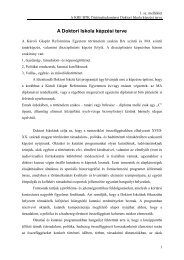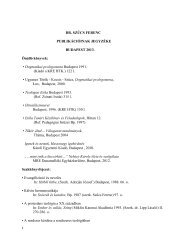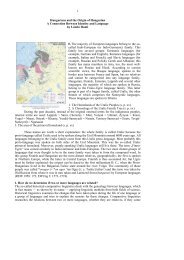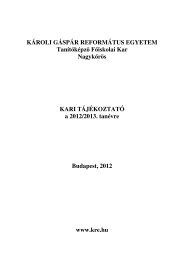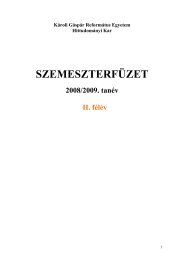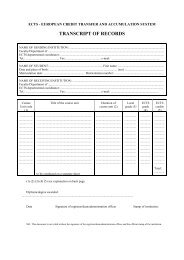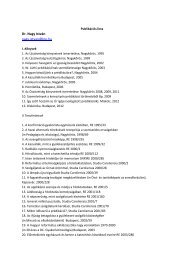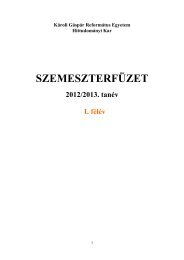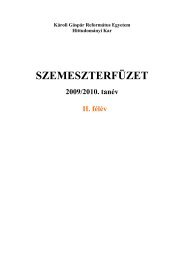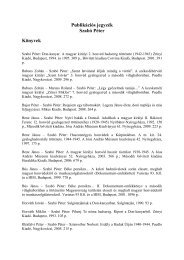Aboriginal perspectives in Canada_Teacher notes.pdf - Education ...
Aboriginal perspectives in Canada_Teacher notes.pdf - Education ...
Aboriginal perspectives in Canada_Teacher notes.pdf - Education ...
You also want an ePaper? Increase the reach of your titles
YUMPU automatically turns print PDFs into web optimized ePapers that Google loves.
4. Safe Travel to Nunavut<br />
Description<br />
Level: pre-<strong>in</strong>termediate (B1).<br />
Time: 30 m<strong>in</strong>utes (without the extension)<br />
Skills: writ<strong>in</strong>g, read<strong>in</strong>g, speak<strong>in</strong>g<br />
Activity: This activity offers some practical trips for future visitors of Nunavut Parks and shows<br />
how this experience may be different from visit<strong>in</strong>g a natural park <strong>in</strong> Central Europe.<br />
Preparation: Photocopy a worksheet for each student or student pair. You may also pr<strong>in</strong>t out a<br />
detailed map of Nunavut to accompany the worksheet.<br />
(http://atlas.nrcan.gc.ca/site/english/maps/reference/prov<strong>in</strong>cesterritories/nunavut)<br />
Procedure: Give students a few m<strong>in</strong>utes to browse the text for unknown words. To complete the<br />
activity, tell students that each gap has ONE preposition miss<strong>in</strong>g, which they have to supply<br />
while read<strong>in</strong>g the <strong>in</strong>formation. The numbers 2 and 4 <strong>in</strong> brackets mean that those items can be<br />
used twice or four times, respectively. Advise students to cross out the prepositions they have<br />
already used. At the end of the activity, you can play the questions game: students sit <strong>in</strong> a circle,<br />
and, one by one, they have to ask the class one question about the text. If they cannot, or if they<br />
ask a question someone else has asked before, they are out. The w<strong>in</strong>ner is the person who<br />
rema<strong>in</strong>s last.<br />
Extension/ variation: If you divide the class <strong>in</strong>to two, you may ask one group to fill <strong>in</strong> the<br />
orig<strong>in</strong>al activity, the other group the one below. After check<strong>in</strong>g the correct solutions students can<br />
pair up and <strong>in</strong>form each other on the content of their text.<br />
You are go<strong>in</strong>g to read a text how to cross streams and rivers while travell<strong>in</strong>g <strong>in</strong> Nunavut Parks<br />
<strong>in</strong> the North of <strong>Canada</strong>. Some nouns and adjectives given are miss<strong>in</strong>g from the text. Fill <strong>in</strong> the<br />
gaps correctly. Use only one word <strong>in</strong> each gap.<br />
levels - safe - course - cold - immediate - lower - flat - tumbl<strong>in</strong>g - cross<strong>in</strong>g - major – flow - necessary<br />
- ski pole - ability - strongest<br />
Stream and river depths can change over the _________ (1) of a day and from one day to the next. This<br />
creates a challenge to assess _________ (2) cross<strong>in</strong>gs. Rivers <strong>in</strong> Nunavut are also very _________ (3) and<br />
must be treated with additional caution when cross<strong>in</strong>g. Consider the follow<strong>in</strong>g:<br />
Cross _________ (4) rivers and streams early <strong>in</strong> the day, especially those that are glacier fed. Water<br />
_________ (5) tend to be lowest early <strong>in</strong> the morn<strong>in</strong>g when the sun is weakest.<br />
22



